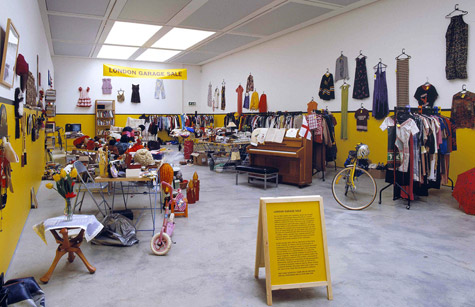How does visual art integrate with performing art? Dance, the new fashion in museums. It's a thought provoking article, reminding me of the performances I saw in MoMa last year.
Come and join the dance
Why museums are making performance and dance the focal point of exhibitions
 Dance comes to MoMA: Jérôme Bel’s The Show Must Go On, 2001 (Photo: Photo by Julieta Cervantes)
Dance comes to MoMA: Jérôme Bel’s The Show Must Go On, 2001 (Photo: Photo by Julieta Cervantes)
“The exhibition as we know it is in a form of crisis,” says the PS1 associate curator Jenny Schlenzka. She is one of several curators who are turning to performance, and specifically dance, to re-engage audiences in museums. Speaking at a recent talk organised by the Performa Institute, “Why Dance in the Art World?”, held in the historical birthplace of the Judson Dance Theater in Washington Square Park, Schlenzka lamented “how few people interact with the art” in galleries. She says that, while museum-going has become something of “an empty ritual”, there is some “really interesting work coming out of the dance world [that] is relevant for the visual arts world”.
Dance in museums is nothing new—the Whitney Museum of American Art in New York has a long history of including dance in its programming—but more and more museums are starting to treat the form as a focal point for exhibitions and collecting, rather than as a side project. Tate Modern included a number of dance works in the opening in July of the Tanks, its new performance and video art spaces housed in former underground fuel containers. Dance is also at the centre of the Philadelphia Museum of Art’s exhibition based on the work of Duchamp, “Dancing around the Bride” (until 21 January 2013), because the main gallery is the only space that can accommodate a sizeable dance floor. “The show is very literally dancing around the space,” says the museum’s contemporary art curator, Carlos Basualdo. The show travels to the Barbican in London next year, where an entire schedule, including dance and theatre, has been built around it. Museum exhibitions are “moving from a static model to a dynamic model”, Basualdo says.
Nonetheless, “the visual art world is still focused on the object, storing and preserving it. A dancer knows that his or her work disappears the very moment it appears. Whereas the visual art world has anxiety about that, dancers have a lot more acceptance,” Schlenzka says. Performance and live art have been “somewhat neglected because of their ephemeral status”, which makes it difficult to catalogue and historicise works, she says.
Now, though, “there is a growing tendency to work with time-based activities, which has made people more attentive to the relationship between dance and art,” Basualdo says. “We’re living in times when the object is less important,” Schlenzka says. “The museum is a place where these changes are being negotiated. The ephemeral is becoming much more important.”
Taking to the floor at MoMA
An indication of the growing respect for dance in the museum world was the recent exhibition of performances at New York’s Museum of Modern Art. Held in MoMA’s huge second-floor atrium, “Some Sweet Day” (until 4 November) presented works by six contemporary dance choreographers, including new commissions organised by the choreographer Ralph Lemon.
On the first day, a sizeable audience surrounded the “stage”, a taped-off portion of the gallery floor, and visitors on other floors stopped to look down from the balconies. Significantly, there was a good proportion of 20-something visitors, a demographic that museums often work hard to attract.
“Nothing replaces the live act, and I think there is a fascination with that,” Jenny Schlenzka says. The performers in the first piece shown, Steve Paxton’s Satisfyin’ Lover, 1967, all wore casual clothing that made them indistinguishable from the average visitor.
Paxton, who sat quietly among the crowd to watch the performance, says the atrium was an ideal setting for the piece because the white-cube space meant that viewers could focus on the movements of the performers, their posture and body language, and the “slow deflation of their personalities” as they held each position for exactly two minutes and 45 seconds. “This is a place where these works belong,” he says.

